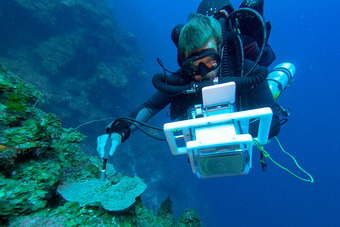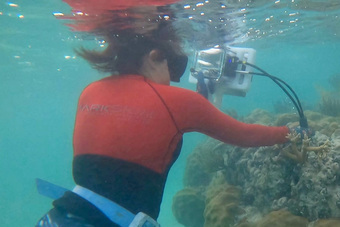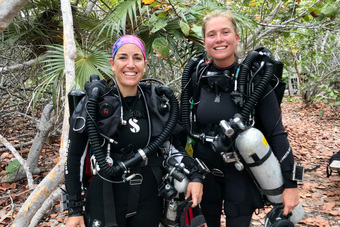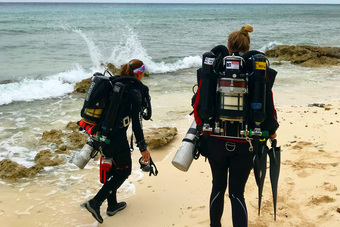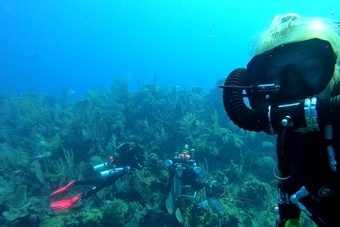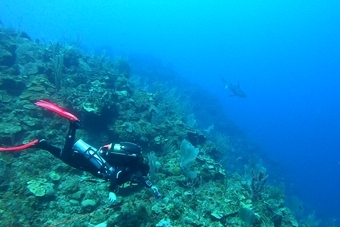Publications:
Carpenter et al. 2022
The ecological distribution of coral species from shallow to mesophotic reefs is dependent on light, which varies drastically among local environments. Current definitions of mesophotic coral ecosystems primarily rely on a 30-m recreational SCUBA boundary to define the upper limits of the community; however, this boundary does not consider local conditions and physiological adaptions of coral species. Using in situ benthic imagery and chlorophyll fluorescence measurements, we examined species distribution and community similarity, as well as photoacclimatization of two common depth-generalist species (Montastraea cavernosa and Porites astreoides) across shallow to mesophotic reef zones at Little Cayman Island. Photoquadrat image analysis revealed a significant shift in coral species assemblages between 25 and 35 m, which was accompanied by a 30% drop in available surface light, suggesting light is a key driver of coral community composition. Patterns of photoacclimatization across depths differed significantly between the two coral species, with available surface light and the quantum yield of photochemistry in photosystem II found to be significant determinants of each species' abundance. These results provide valuable baseline data on coral community composition across a broad depth gradient in Little Cayman that can contribute to a growing body of evidence to set an upper boundary of mesophotic reefs based on light availability and photoacclimatization potential of depth-generalist species.
15- 45 m
Mesophotic “mentions”
29 x (total of 5256 words)
Classification
* Presents original data
* Focused on 'mesophotic' depth range
* Focused on 'mesophotic coral ecosystem'
Fields
Biodiversity
Community structure
Physiology
Focusgroups
Overall benthic (groups)
Scleractinia (Hard Corals)
Locations
Cayman Islands
Platforms
Rebreather



